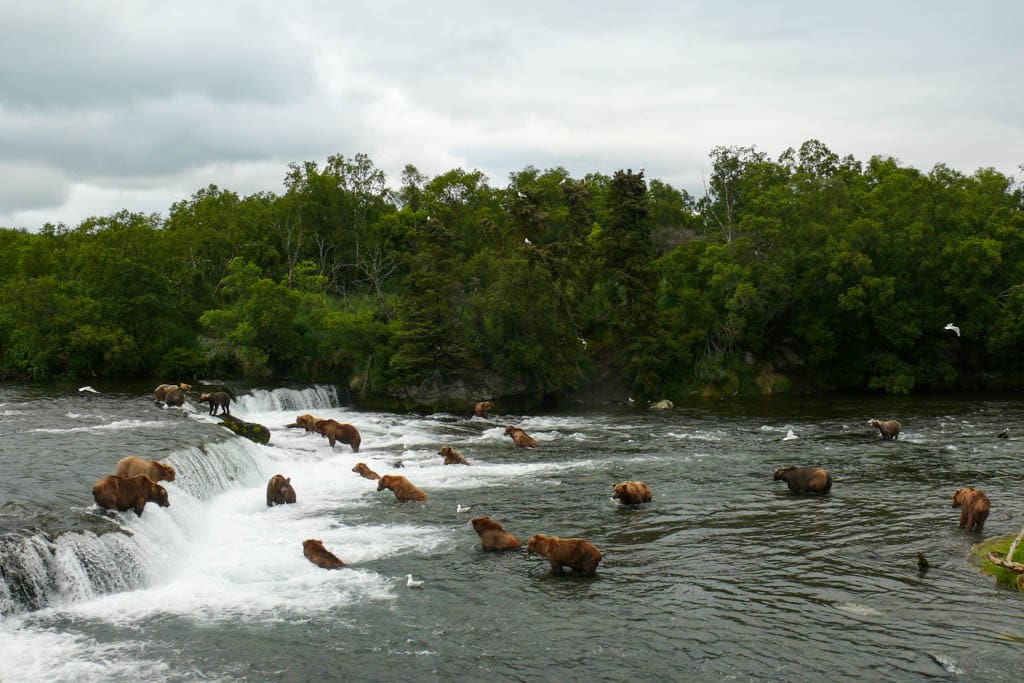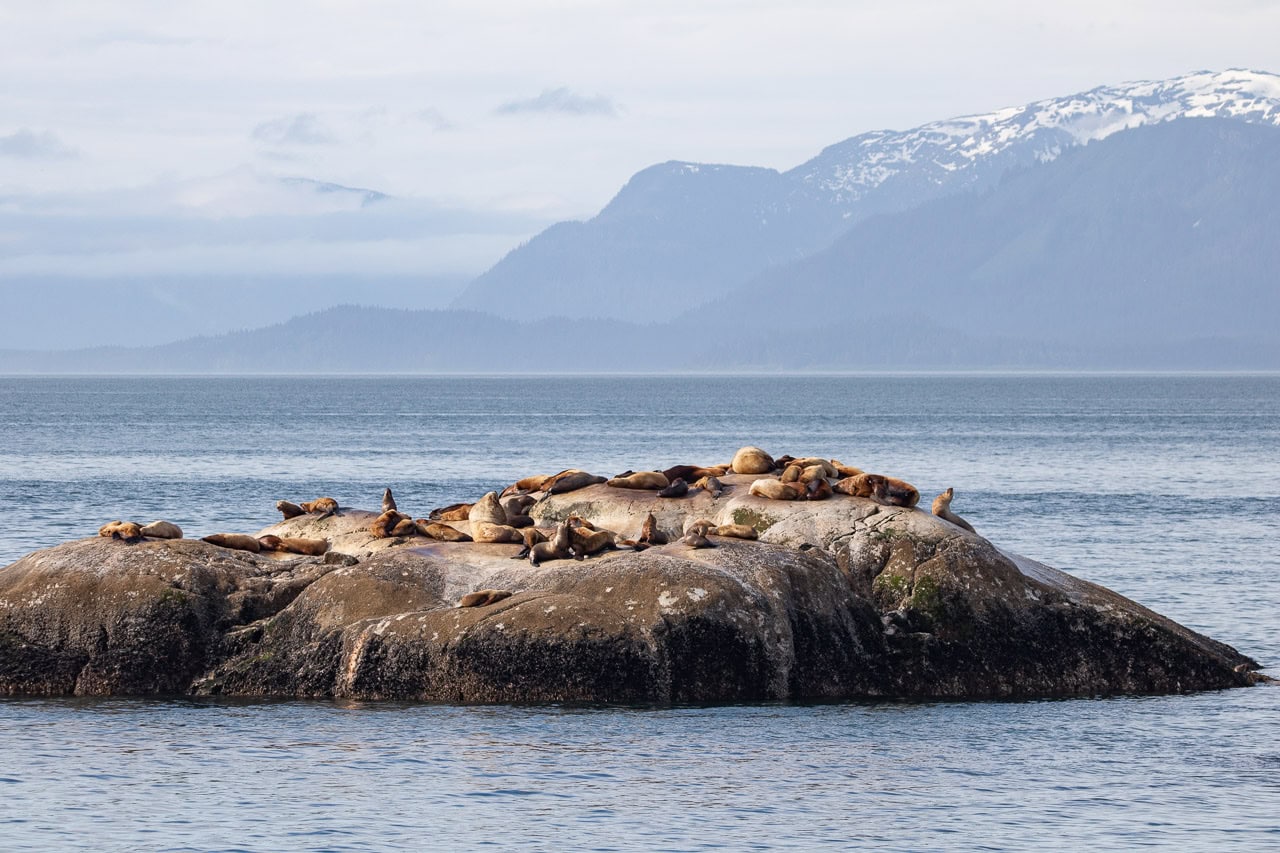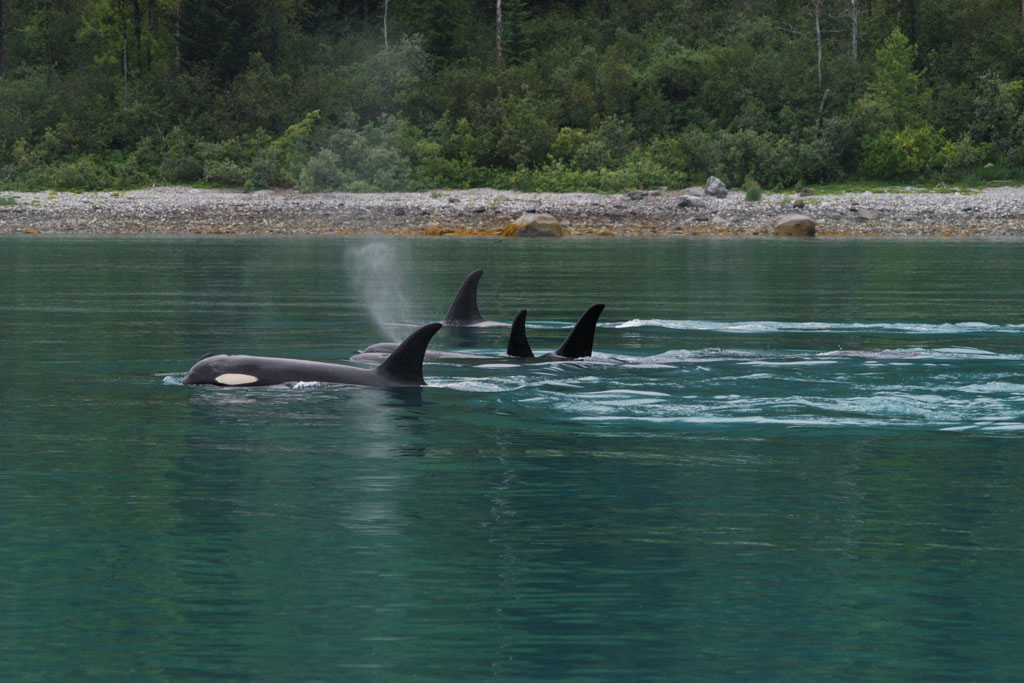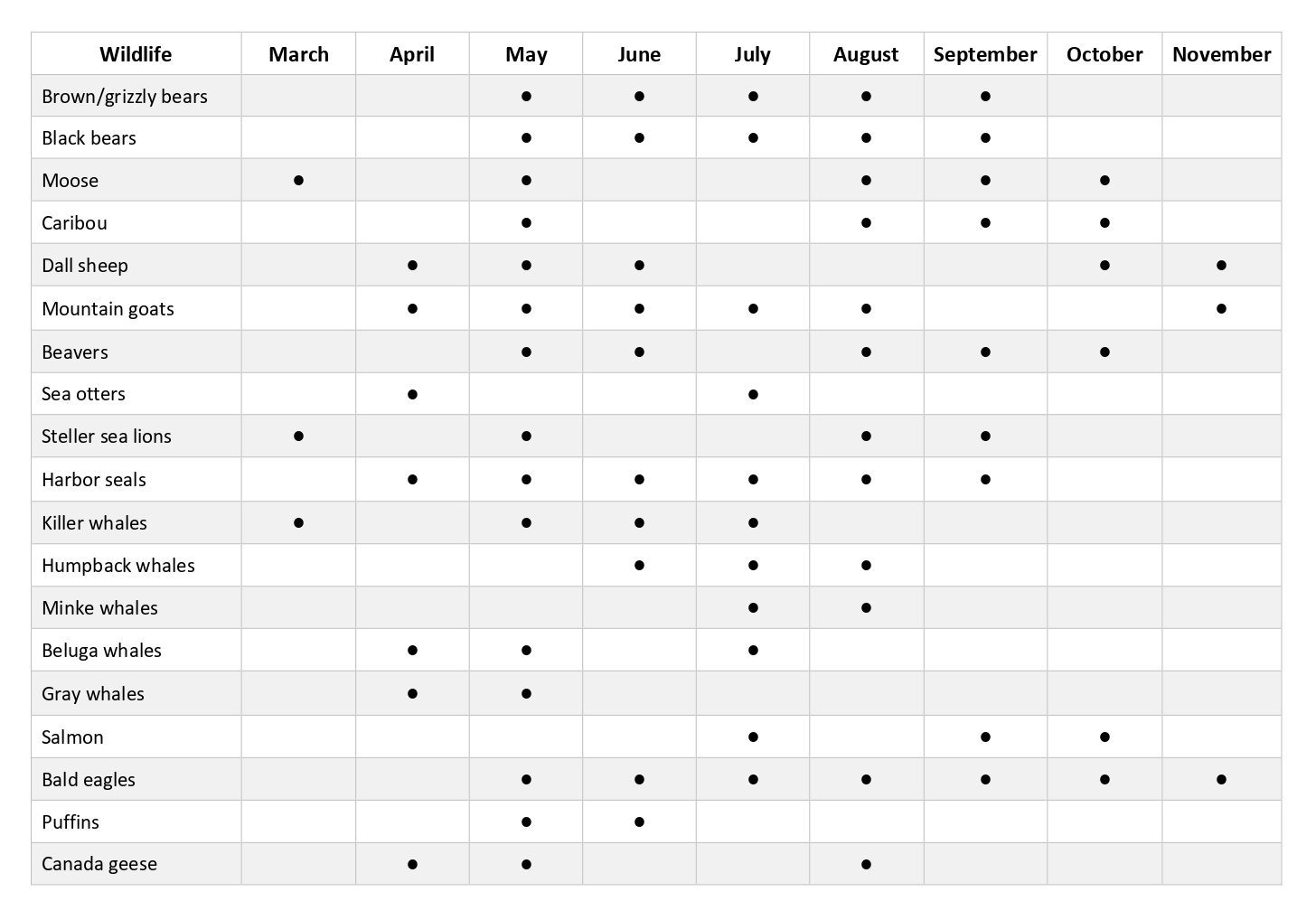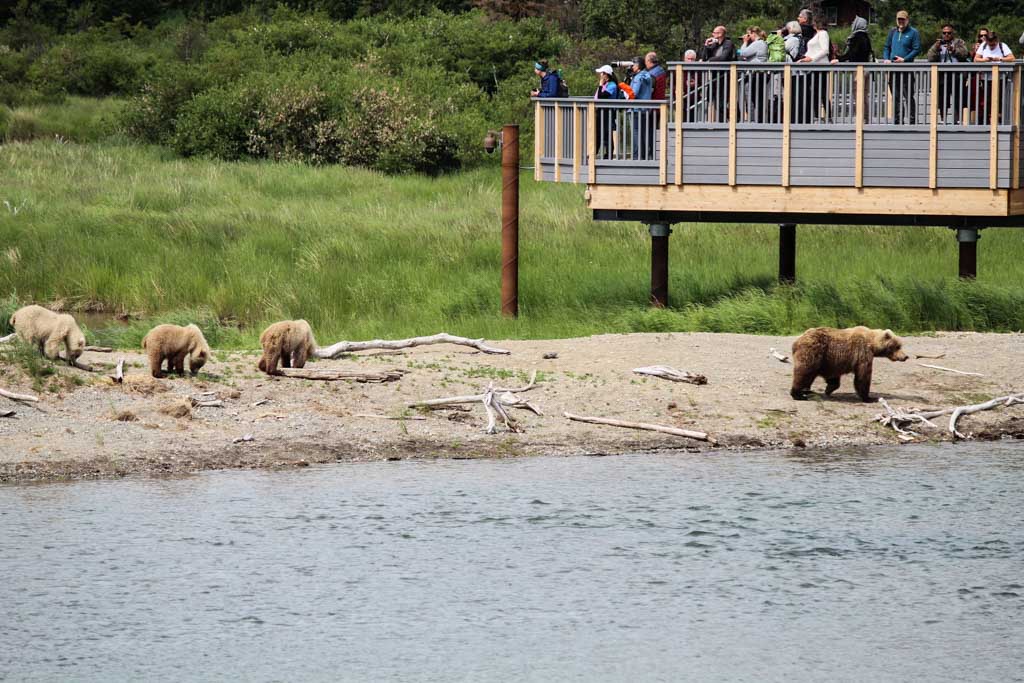See Bears, Moose, Whales & Eagles in These 5 Awesome Alaska Parks
No visit to “The Last Frontier” is complete without a wildlife watching tour of some kind. The epic, world-class wildlife watching in Alaska is what makes the state such a great and popular destination.
Seeing iconic animals such as bears, moose, whales, bald eagles and sea lions in their natural habitat will be a huge highlight of your trip. However, although they’re abundant in numerous places, you can still increase your chance of a successful Alaska wildlife watching trip by focusing on the following parks.
5 Parks That Offer the Best Alaska Wildlife Viewing
Wondering where to see wildlife in Alaska? I’ve picked a handful of accessible parks in Alaska, most of which lie (relatively) close to Anchorage, the state’s largest city. I recommend that you pick one of these places for your wildlife adventure.
From Anchorage, the first four are all a car, boat or plane ride away. Super-convenient, well worth it. The fifth national park, Glacier Bay, is best accessed by boat from places like Vancouver or Seattle. More info below!
1. Denali National Park
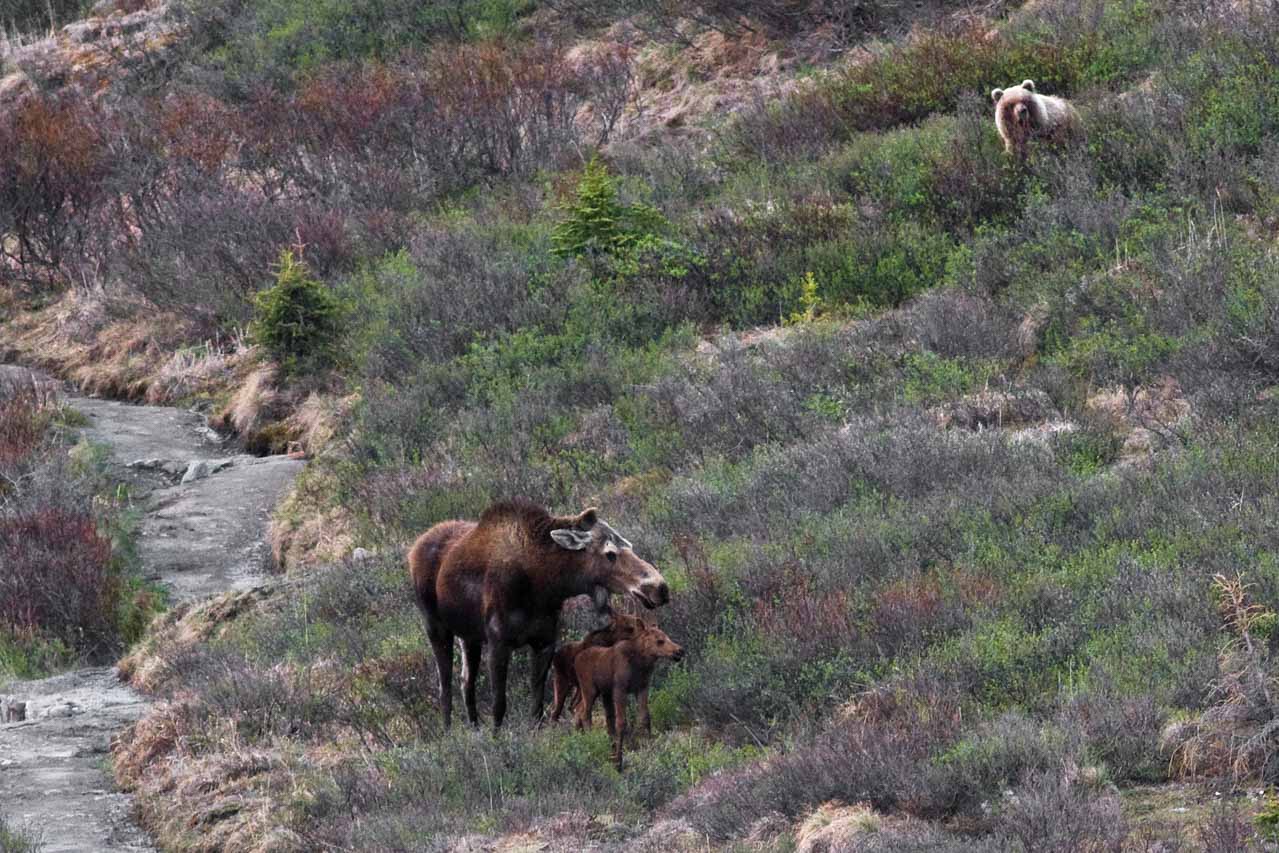
By far the most visited of all national parks in Alaska, Denali National Park offers the cheapest Alaska wildlife watching opportunities. Some would, therefore, say that it has the best wildlife viewing in Alaska.
It’s the only park in this list that lies in Alaska’s interior, five hours by car north of Anchorage. A 6-million-acre expanse of wilderness bisected by only one single road, the park is centered on massive 20,310-feet-high Denali, North America’s highest mountain. Vast valleys, tundra and glaciers surround Denali, home to well over 200 different animal species.
The Denali National Park Road is where you’re almost guaranteed to spot a few grizzly bears. Other frequent wildlife sightings include Dall sheep, black bears, moose, caribou and wolves.
2. Kenai Fjords National Park
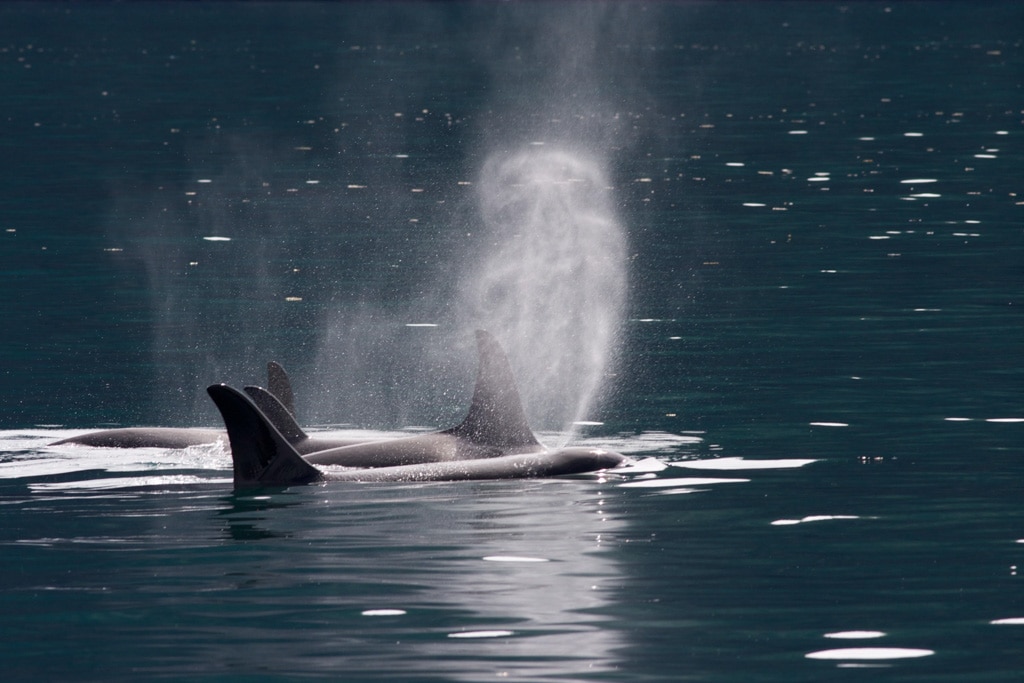
East of Seward, at the edge of the wild Kenai Peninsula, lies Kenai Fjords National Park. Ice dominates the landscape here, as almost 40 glaciers flow down from the enormous Harding Icefield, the main feature of the national park.
The only glacier within the park that’s accessible by road is the Exit Glacier, an area home to a nature center and a few fine hiking trails. You might spot some land animals and birds here, but the main part for wildlife watching in Kenai Fjords National Park is the coast.
Boat tours are by far the most popular way to see this awe-inspiring coastal park. Wildlife viewing tours depart from the small harbor in Seward every day in summer, offering you the chance to spot sea otters, sea lions, orcas, humpback whales and several other marine mammals.
These coasts are also home to no fewer than 190 bird species, including famous ones such as bald eagles and puffins.
3. Chugach State Park
One of the largest state parks in the U.S.—only Alaska’s Wood-Tikchik State Park and California’s Anza-Borrego Desert State Park are larger—, Chugach State Park is also definitely the most accessible park to see wildlife in Alaska.
It literally lies within the Municipality of Anchorage, many of its access points and trailheads located less than a half hour from the city center. The park protects the western part of the spectacular Chugach Mountains and a section of the northern shore of the Turnagain Arm.
This combination of mountains, forests, rivers and coastline results in a mindboggling abundance of wildlife.
One of America’s greatest state parks, Chugach State Park is home to about 1,000 moose, 80 black bears and 40 brown bears, as well as mountain goats, a wolf pack, river otters and beavers. When you spend a couple of days camping within the park, you’ll almost certainly spot a few of them.
Additionally, the Turnagain Arm is a popular area to see beluga whales and sea otters directly from the shoreline.
Don’t miss the Alaska Wildlife Conservation Center, situated on the shores of the Turnagain Arm and the perfect place to learn more about wildlife in Alaska.
4. Katmai National Park
Although extremely remote, Katmai National Park is still pretty, relatively, accessible. You can’t get there by road, though, but if you’re willing to spend some money, an air taxi can get you there from Anchorage and other smaller towns in the region.
These small planes will drop you off inside the park, which has very few facilities and entirely consists of wilderness, including several volcanoes. The most popular place within Katmai National Park is Brooks Camp, reachable by float plane or boat.
This is one of the absolute best national parks for wildlife viewing in the U.S., world-famous for its unparalleled bear watching opportunities. The park is home to more than 2,000 brown bears, many of which head to Brooks Falls near Brooks Camp to feed on sockeye salmon in July and September.
When it comes to brown bear watching, few places on Earth can compete with Katmai National Park.
5. Glacier Bay National Park
Another sensational coastal national park, Glacier Bay National Park lies in Alaska’s famous Inside Passage, just southeast of Juneau. Part of a UNESCO World Heritage Site, it encompasses not only epic coastlines, but also towering mountains and rivers.
Glaciers are, as its name indicates, the main feature of this park. There are seven tidewater glaciers that effectively calve icebergs into the ocean.
Wildlife viewing in Glacier Bay National Park typically happens on boat tours or cruises, although you can also see various wildlife on the park’s limited number of hiking trails. Glacier Bay is a key destination on many Alaska wildlife cruises from Seattle and Vancouver, while the Glacier Bay boat tour from Bartlett Cove is an even better option!
Often-seen animals include humpback whales, minke whales, orcas, harbor seals, sea lions, sea otters and Pacific white-sided dolphins, while bald and golden eagles soar across the sky.
Best Time for Alaska Wildlife Watching
You can see animals any time of the year, but the best time to see wildlife in Alaska is summer, roughly from May through August. Let’s break things down by species and best months for Alaska wildlife adventures in the table below.
High-Profile Alaska Wildlife List
Note: This table indicates the best time to see wildlife on the Alaskan south coast and in south-central Alaska, where the five parks featured in this post are located. Other regions in the state may have different optimal wildlife watching times.
Additionally, I have to point out that this table highlights the top months of the year to see certain animals. This does not mean that they don’t occur outside these time frames. They might and often do.
I recommend that you use this table as a guideline when planning your Alaska wildlife viewing vacation. You can find more detailed regional wildlife viewing info on the Alaska Department of Fish and Game website.
Alaska Wildlife Viewing Safety
As fun as watching wildlife in their natural habitat is, it’s critical to remember that the animals are wild. They can be unpredictable and are potentially dangerous. Each year, people get injured or even killed by the wild animals they’ve come to watch.
So, to protect yourself, the rest of your group as well as the animals, the National Park Service prohibits getting closer than 100 yards to bears and 25 yards to other wildlife. (Some parks may have other rules, so check their website for more information.)
In Alaska, there’s no lack of iconic and powerful animals, from mountain goats to moose to grizzly bears. Make sure you know what to if you encounter them. Always carry bear spray when out and about watching wildlife in Alaska.
- What to do when encountering a black bear
- What to do when encountering a grizzly bear
- What to do when encountering a moose
Additionally, when driving within parks, keep your eyes on the road at all times. Collisions between wild animals and vehicles are one of the deadliest types of wildlife encounters in national parks. Stick to the speed limit and watch for animals that may scoot across the road, such as deer, moose and bears.
Essential Gear to See Wildlife in Alaska
You can set yourself up for the best wildlife viewing in Alaska experience by picking one of the parks above and making sure you have the proper gear. Hiking boots, backpacks and appropriate clothing are obvious necessities.
Another item that will greatly enhance your Alaska wildlife watching trip is binoculars. They’re more essential than anything else, really.
If you’d like to do some wildlife photography in Alaska, make sure to get a decent telephoto lens. The bigger, the better, but remember that these kinds of lenses are quite expensive.
As I mentioned earlier, it’s foolish to go out into the Alaskan wilds without carrying bear spray. Both black bears and grizzlies are abundant in these parks, and encounters happen regularly. Bear spray is the single most effective way to prevent an actual attack.


